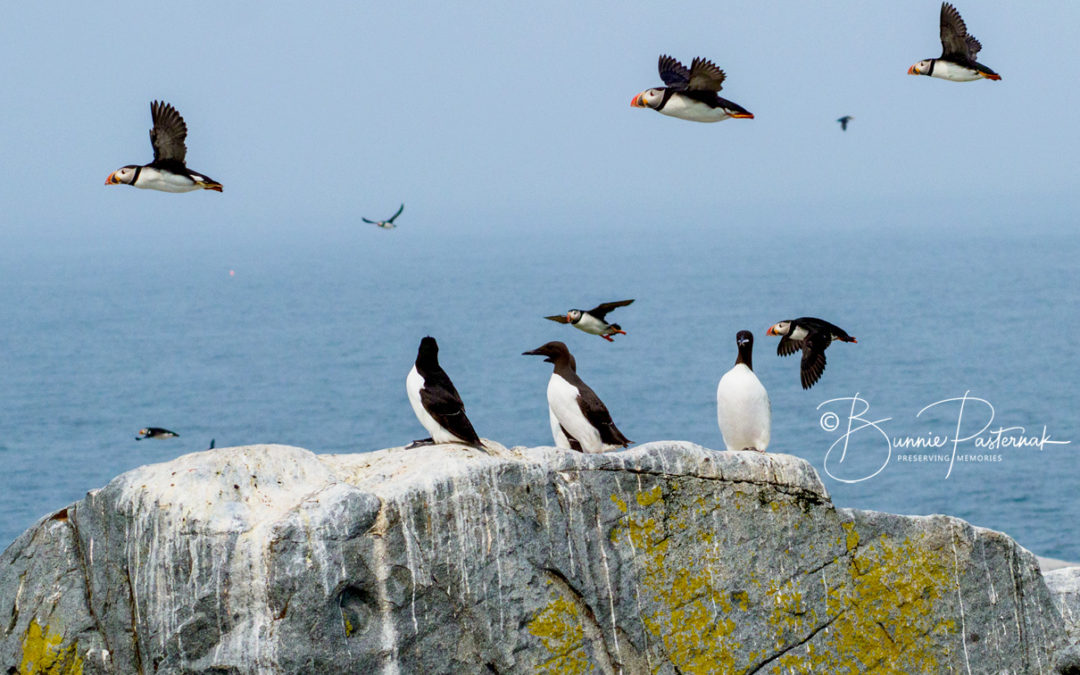
by Bunnie Pasternak | Aug 8, 2021 | Uncategorized
Every year, there are thousands of returning Atlantic Puffins from the sea that roost on a variety of islands off the Atlantic Coast of Maine and nearby Canada. This year was no different and a Hunt’s Photo and Video, week-long Photo Adventure with Don Toothaker and Mark Buckler to the “Bold Coast,” allowed my second, successful visit to watch them up close on Machias Seal Island. What an opportunity to listen to them talk to each other, to hear them pitter-patter across the top of the blind that I and others shared for what felt like only a nano second from the time entering the building. It also was fun watching them doing all kinds of acrobatics – both in the air and on their chosen landing locations amongst the cliffs and rocks of the island. But the best of all was watching the Puffins preening, they were hilarious and true contortionists at their best. Hope you enjoy the images and at some point in the future — I wish you well in being able to see the Puffins yourself and preserving memories of your own. [Be sure to remember to double click on images to enlarge them.]
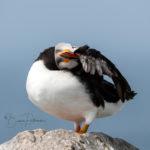
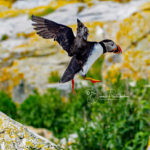
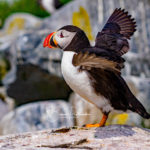
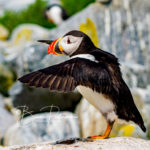
by Bunnie Pasternak | May 23, 2021 | Uncategorized
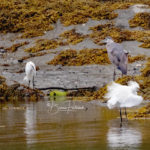
Mill Cove in Maine and many more along the coast are inviting locations for the congregation of all sorts of birds — large and small. I’ve seen Bald Eagles, Osprey, and Hawks, along with a variety of songbirds and ducks in or near the Cove for years.
Recently, I spent some time watching the interaction of a Blue Heron and five (5) Egrets vying for some food in a retreating tide. The scene reminded me some of the old “Saturday-Night Rumbles” on TV, when fighters would check each other out and then, would eventually start to physically engage in fisticuffs. Surprisingly, the Heron and the Egrets were no different, despite their size differences. Blue Herons can be up to 4.5′ tall with up to 5-6′ wingspans. Egrets come in a variety of sizes, but the ones I saw appear to have been Snowy Egrets, which can get to 2.5’ tall with 3′ wingspans.
Herons generally fish alone, and this Heron had been stoically standing on the shore watching the receding waters for food to eat. There were some Egrets in the area, while others started flying in to also hunt for food. The interactions between the Heron and Egrets were fascinating. One by one the Egrets, walked back and forth past the Heron, getting closer and closer to the Heron’s fishing spot while checking out the opportunities.
As time went on, the Heron became more and more agitated by the Egrets’ movement. At one point in a flash, the Heron decided enough was enough and took off after one of the smaller Egrets. Can you just imagine this huge, gangly bird swoop up at you in what seemed like a nano-second, readying to pounce? The little Egret took off in a hurry to escape. It was close, but he got away and the Heron settled in again. It worked for awhile, but of course truces are often temporary and the cycle began again. . . .
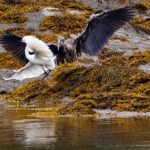








Recent Comments